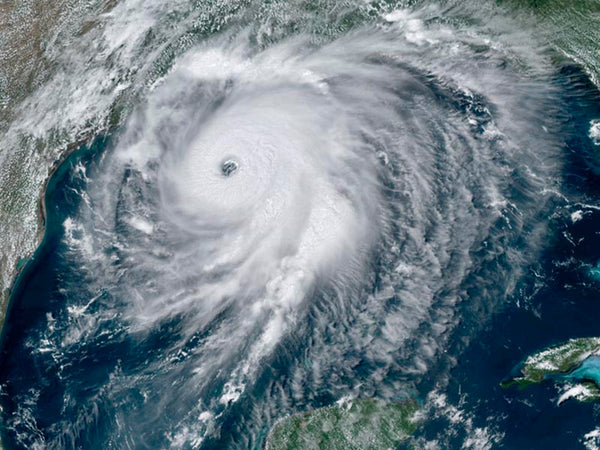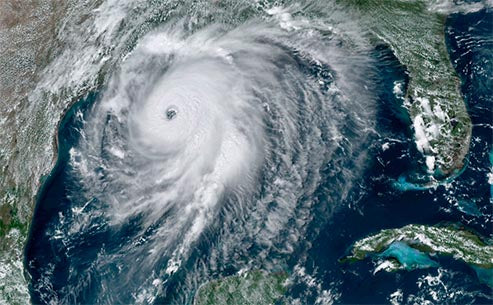
The history of human use of wind energy can be traced back to BC, but for thousands of years, the development of wind energy technology has been slow and has not attracted enough attention. Since the world oil crisis in 1973, there has been a problem of energy shortage. Under the dual pressure of the emergency of conventional energy and the deterioration of the global ecological environment, people have realized the instability and limitation of conventional fossil energy supply, so they have sought clean and renewable energy. Energy has become an important topic in the modern world. As a part of new energy, wind energy has renewed its considerable development. As a pollution-free and renewable new energy, wind energy has great potential for development, especially for coastal islands, remote mountainous areas with inconvenient transportation, vast and sparsely populated grasslands and pastures, and rural areas far from the power grid and difficult to reach in the near future. , Frontier, as a reliable way to solve production and living energy, has very important significance. As a kind of natural energy, wind energy is favored because of its abundant reserves, inexhaustible, clean and pollution-free, and can be developed and utilized. Even in developed countries, wind energy is increasingly being valued as an efficient and clean new energy. The U.S. Department of Energy has investigated that the wind energy density of Texas and South Dakota alone is sufficient to supply electricity consumption in the United States.
Wind Energy Industry

The research report released by Deutsche Bank predicts that the global wind power development is entering a stage of rapid expansion. The wind energy industry will maintain an annual growth rate of 20%. By 2015, the total output value of the industry will increase to 5 times the current level.
From the current technological maturity and economic feasibility, wind energy is the most competitive. In the medium term, the prospects of the global wind energy industry are quite optimistic. The renewable energy encouragement policies issued by governments of various countries will provide a huge impetus for the rapid development of the industry in the next few years.
Wind is the most common natural phenomenon in daily life. Among the natural scenery often described in literature is wind. The wind accompanies us all the time throughout the year. The spring breeze is warm in spring, the wind is scorching in summer, the wind in autumn is slack in autumn, and the wind is bitter in winter. Although people cannot see the wind, they feel its existence at any time. The wind has energy. On weekdays, the breeze can drive the toy windmill to rotate rapidly. In the typhoon season of the squally raging wind, the damage caused by the wind disaster makes people feel the power of the wind even more. It is estimated that a typhoon with a diameter of 800km in the ocean has energy equivalent to the energy of 500,000 atomic bombs that exploded on Hiroshima in 1945. The energy of wind is called wind energy for short.
Although wind is the most familiar natural phenomenon, its formation process is quite complicated and is affected by a series of factors. To understand the formation of wind, one must first study the movement of the atmosphere, which surrounds the earth. The flow of air, like the flow of water, moves from a place of high pressure to a place of low pressure. The flow of air creates wind. The root cause of the air pressure difference and flow is solar energy.
Causes of wind

Because there is an angle of 66.5° between the earth's rotation axis and the revolution axis around the sun, the sun's irradiation angle is different everywhere on the earth, even for the same place, the irradiation angle changes every day. The north and south poles of the earth receive the least sunlight, the temperature is low, the air density is high, and the air pressure is high. The equatorial region of the earth receives the most sunlight and absorbs much more solar energy than the polar regions, so the temperature is high, the air density is low, and the air pressure is low. In this way, the heavier cold air sinks from the poles to the equator along the ground, while the lighter hot air rises near the equator and moves to the poles to fill the sinking cold air. After that, the cold air entering the equatorial region was heated up again, and the hot air flowing into the polar regions was cooled down again. This repeats, forming a hemispherical air circulation, which is wind.
The rotation of the earth from west to east also affects the flow of air. The inertial rotation speed caused by the rotation of the earth due to the ascending airflow at the equator is greater than the inertial rotation speed obtained from the sinking airflow from the extreme underground. Therefore, in the northern hemisphere, the direction of air moving northward is easterly. Since this wind blows from the west, it is called a westerly wind. The air moving from the north pole to the south is biased to the west, which is called the extremely easterly wind. In the northern hemisphere, air accumulates more in the 30° north latitude area, resulting in a high-pressure zone and a mild climate in this area, which is called the subtropical high-pressure zone. A part of the air moves southward and westward, which is called the monsoon. Similar wind conditions can occur in the southern hemisphere.
The topography and landforms of various parts of the earth also affect the formation of wind. Take the valley as an example. During the daytime sunlight, the air temperature on the mountain rises and rises upward. The cold air in the valley has a low density and high pressure, so it rises along the mountain slope to form a valley wind. At night, the heat from the mountain quickly radiates to the upper air, and the temperature of the air near the hillside decreases, the density increases, and it moves down the hillside to form a mountain breeze. Between the ocean and the coastal land, due to the large heat capacity of sea water and the small heat capacity of land, the temperature of sea water is lower than that of land under the sun during the day. As a result, the higher-temperature air on the land rises, while the colder air on the sea flows to the land to supplement, forming a sea-land breeze or shore wind. On the contrary, at night, sea water cools more slowly than land, so the warmer air on the sea rises and the relatively cold air on the land flows to the sea, forming land-sea breeze.
Wind in different regions

The formation of wind is not only related to the above-mentioned solar radiation angle, the rotation of the earth, the topography of the region, etc., but also has the characteristics of randomness, change with seasons, and change with altitude. The two most important physical parameters describing wind are wind speed and wind direction. Wind speed refers to the moving speed of the wind, that is, the distance the air flows through in a unit time; the wind direction refers to the direction where the wind blows. The study of meteorology and dynamics is mainly the horizontal wind. If you use a tachometer to measure the wind speed at a certain point, you will find that the wind speed changes randomly over time. Therefore, the wind speed generally refers to the average value of the varying wind speed over a period of time, that is, the average wind speed. In addition, the wind direction is also random and changes all the time. The wind direction can be measured with a wind direction rod and the prevailing local wind direction can be obtained. Due to the deflection angle between the earth's rotation axis and the orbiting axis of the sun, the intensity of solar radiation in various regions will change seasonally over time, so that the wind direction and wind speed in each region will change seasonally. In China’s Shandong Peninsula and Liaodong Peninsula, the wind is the strongest in spring, followed by winter; Taiwan and South China Sea islands have the strongest wind in autumn, followed by winter; in inland areas such as Northwest, Northeast and North China, the wind is the strongest in spring, followed by winter, and the smallest in summer. .
In the atmospheric friction layer within 2000m from the ground, the air flow and wind force are also affected by ground friction. Ground friction, ground plants, buildings, etc. can hinder air flow and reduce wind speed. Therefore, the wind speed increases with the height from the ground. At the same height, the wind speed also increases due to the reduction of obstructions such as ground buildings and ground plants. People can feel that when the height is the same, the wind speed is the lowest in the city with tall buildings, the wind speed is higher in the suburbs or villages, and the wind speed is the highest in the flat land or coastline.
Wind has several characteristics, variability-wind speed and direction are always changing, completely random changes over time; regularity-with the day and night, seasonal changes, phoenix speed, wind direction changes; height-wind speed changes with height The topography and topography-the effect of the wind speed has a narrow tube effect; friction effect; valley wind effect; circumfluence effect.
The cause of wind is very complicated, so people often say that there are unexpected events in the sky.
















